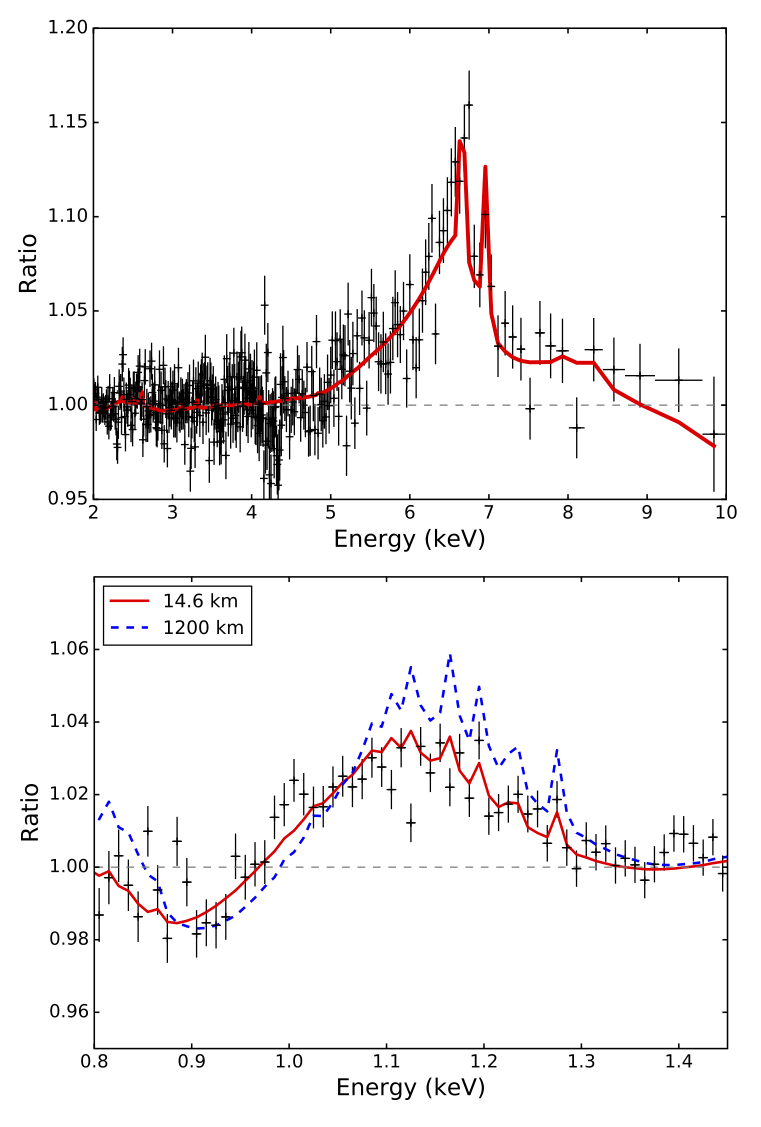NICER / ISS Science Nugget for April 19, 2018NICER Detects Multiple "Reflection" Features In the Low-Mass X-ray Binary Serpens X-1Serpens X-1 is a persistently accreting neutron star (NS) system, with a companion star of approximately one solar mass, located in the direction of the Galactic Center. This source has consistently shown spectral emission features that arise from the reprocessing (or "reflection") of high-energy X-rays by an irradiated accretion disk surrounding the NS. These hard X-rays may be produced in a corona, at the surface of the NS, or in a boundary layer between the disk and NS. The most prominent of these features is due to highly ionized iron K-shell emission between 6.4 and 6.97 keV photon energy. With the collecting area and spectral sensitivity of NICER, in just 4.5 kiloseconds worth of data we were able to detect structure within the Fe K line and, for the first time, also definitively within a cluster of lower-energy emission features due to Fe L-shell and lighter element K-shell transitions, near 1 keV. These lines are shaped by relativistic and Doppler effects within the innermost region of the accretion disk due to its proximity to the NS.
NICER's energy resolution and sensitivity, together with the recent development of self-consistent reflection models tailored for NSs, provide the opportunity to study the inner accretion flow in a new light and learn more about these extreme environments. This result has been accepted for publication as NICER's third post-launch peer-reviewed paper – Ludlam et al., "Detection of Reflection Features in the Neutron Star Low-mass X-ray Binary Serpens X-1 with NICER", Astrophysical Journal Letters, April 2018. NICER
|



